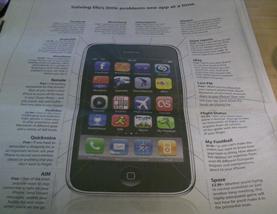With the flurry of announcements about application stores at Mobile World Congress in Barcelona recently, it got me thinking…
At what point does an application store from Apple, Nokia or a mobile operator simply become another walled garden?
Let’s check for the signs that app stores are really just a new type of walled garden:
- app store owner gets to choose which applications are allowed into the store
- app store owner has to “approve” applications before they are listed in the store
- own brand applications more likely to be promoted than competing applications
- app store owner decides how the apps are promoted and which ones get precedence
- the only way applications can be loaded onto the device is via the app store (true for Apple)
Haven’t we as an industry learnt anything from the failed attempts at “operator decks” and walled gardens from earlier this decade?
In the age of Facebook, Twitter and blogging, consumers are demanding choice. The right to choose what they watch, listen, consume and where they do it. App stores are great for discovery of great new content and applications, but I am fearful that they may just become another closed ecosystem that stifles development and creativity.
 The iPhone App store has been excellent at showing “normob” (normal mobile users) that applications can be easily bought and installed – something that Nokia have been trying to master with their download offering for some time now – and are yet to master. The photo on the left was a full page advertisement in a London weekend paper – promoting the Apple app store on O2 and the type of applications available. It has also been supported by prime time TV commercials showing how easy it is to install iPhone applications.
The iPhone App store has been excellent at showing “normob” (normal mobile users) that applications can be easily bought and installed – something that Nokia have been trying to master with their download offering for some time now – and are yet to master. The photo on the left was a full page advertisement in a London weekend paper – promoting the Apple app store on O2 and the type of applications available. It has also been supported by prime time TV commercials showing how easy it is to install iPhone applications.
We’re way beyond needing to offer only “on portal” alternatives – most of the mobile internet browsing at the moment is actually off-deck. The GSMA survey of mobile browsing habits released at mobile world congress showed (not surprisingly when you roll up ALL operator data) that the number 1 website destination was an operator site.
Now I’ve studied statistics and know that stats can be misleading. Every other site in the GSMA’s top 10 was a NON operator site. I’ll hazard a guess that if you broke down the destinations of all the “top” operator sites, none of them on their own would match any of the off-deck sites. What does this prove? Consumers want freedom to browse. They should be offered the same freedom to visit any site via their mobile and download, purchase and install applications of their choice.
I’ve been downloading and installing applications on my mobile device for years. A couple of my favourite sites are epocware.mobi and mobisystems.com/mobile. Each site has a range of excellent and useful applications for my Nokia handset. None of these applications are available from my operator portal – so why would I decide to limit myself to the operator sponsored destination?
Now I’m not saying that operator portals are a bad idea – we just need to make sure they remain open and flexible and don’t go down the same disastrous walled garden route.
Do you agree with me? I look forward to your comments below.

